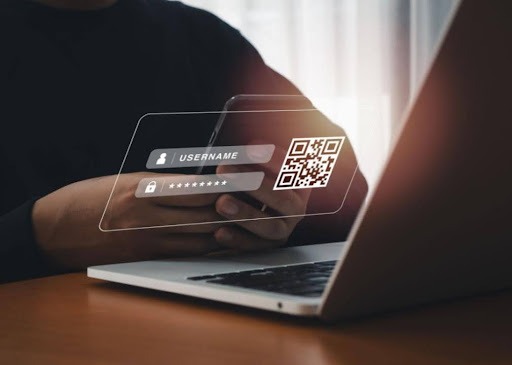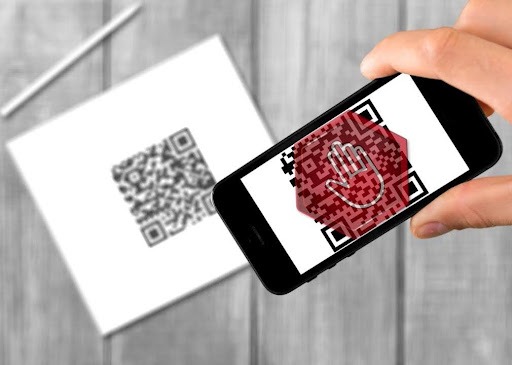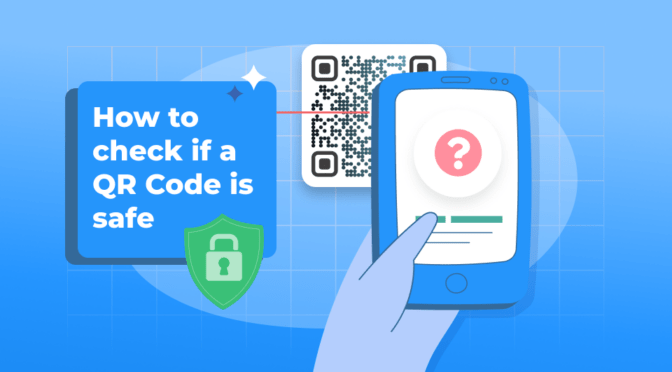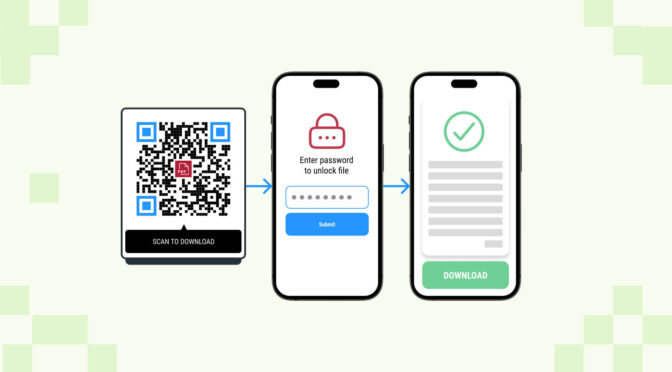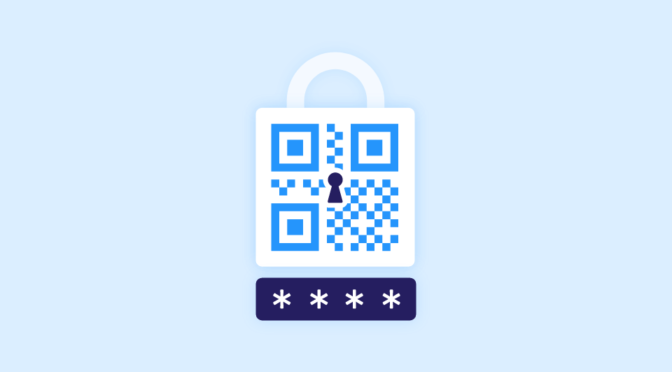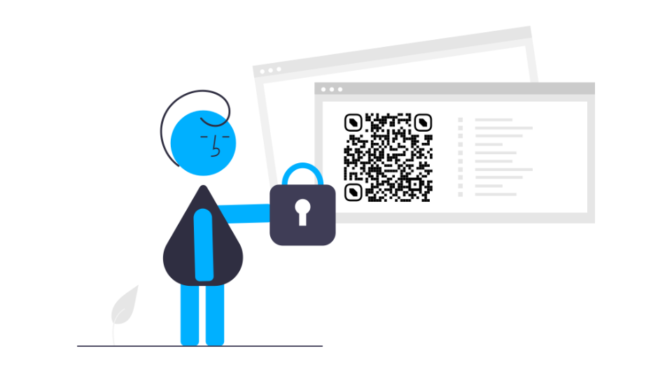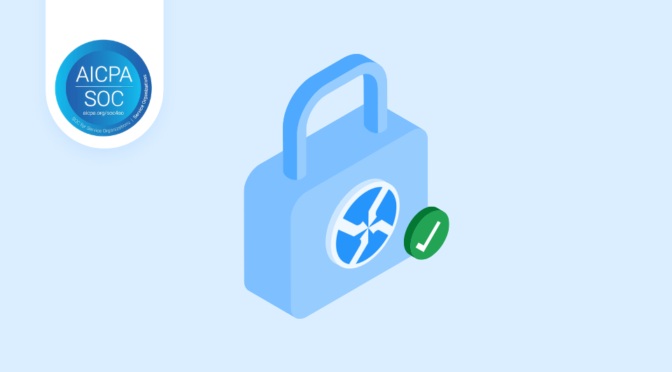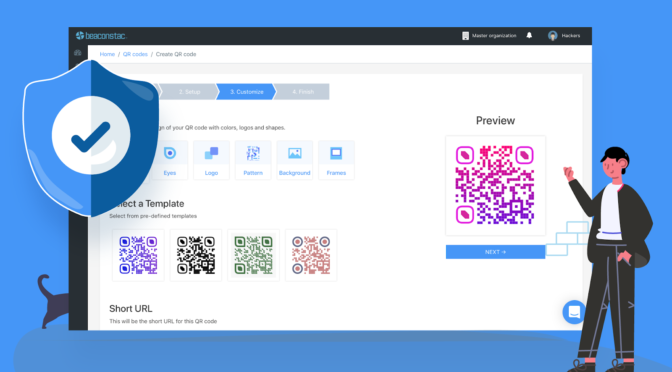Every few months, the internet reminds us that it is held together by a surprisingly fragile set of global systems. November 18, 2025, was one of those reminders. Cloudflare went down, and within minutes the dominoes began to fall: ChatGPT froze, X refused to load, Discord blinked out entirely, Canva went offline, and dozens of other platforms became unreachable.
As that unfolded, our team began hearing from customers: “Are we going to experience downtime?” “Should we expect our QR Codes to stop working?” “Is Uniqode affected by this?”
In this case, the answer was reassuring: Uniqode wasn’t affected. Our infrastructure runs on AWS, not Cloudflare, so scans continued to process normally. But the questions were reasonable.
Most people don’t realize that a QR Code, despite appearing static and self-contained, actually relies on multiple layers of global internet infrastructure to function. DNS failures, CDN disruptions, routing anomalies, and security filters can all interrupt that journey, and none of these layers is immune. Cloudflare has had multiple high-profile incidents, and as recently as October 20, 2025, AWS experienced a significant DNS-related outage that disrupted thousands of services across the web.
If QR Codes play any meaningful role in your business: packaging, events, payments, operations, or marketing, it’s worth understanding what breaks during these outages, why QR Codes are vulnerable to infrastructure instability, and what steps you can take to protect your customers’ experiences.
TL;DR:
1. Why did my QR Codes stop working during the outage?
Because the redirect path behind your QR Code depends on DNS, CDN, and routing infrastructure. If your platform uses the same provider that went down (e.g., Cloudflare), your scans fail even though the QR Code itself is fine.
2. How do I know whether my QR platform will break during the next outage?
Check which infrastructure they rely on. If the platform is tied to a single CDN, DNS provider, or short-link service that frequently appears in outage reports, your QR Codes will be vulnerable by extension.
3. Can any QR platform promise that scans will never fail?
No, every major provider (Cloudflare, AWS, Google Cloud, Fastly) experiences outages. The real differentiator is how often they fail, how wide the impact is, and how quickly your platform can detect and route around issues.
4. What’s the simplest step I can take to increase reliability today?
Use a custom domain connected to a stable DNS provider like AWS Route 53 or Cloudflare DNS. This gives you control over one of the most failure-prone parts of the QR journey.
5. Why did the QR Code work for some people but not others?
Outages don’t affect all regions, carriers, or cached DNS records equally. Some users route through healthy paths; others hit the failing ones.
Table of contents
- Why QR Codes fail when the internet wobbles
- Why internet outages matter to businesses using QR Codes
- What you need to understand about QR infrastructure
- How Uniqode handles these internet outages
Why QR Codes fail when the internet wobbles
(and how to build infrastructure that doesn’t crumble with them)
A QR Code looks static. It’s just a pattern, printed or displayed on a screen. But the moment someone scans it, that QR Code triggers a chain of internet infrastructure handoffs, which must all cooperate:
- A DNS provider translates the domain into an IP address
- A CDN routes the request to a healthy edge node
- A redirect engine processes routing logic and Smart Rules
- Security layers validate the traffic
- The destination page loads, pulling in fonts, scripts, and third-party content
In normal conditions, these steps happen so quickly that they feel like a single action. But during a major outage, each layer behaves differently and inconsistently across geographies, carriers, or devices.
So when your QR Codes “stop working” during a major outage, it’s rarely the QR Code itself that’s at fault. It’s the infrastructure behind it: the DNS, CDN, and routing layers your QR platform depends on.
This is where QR Codes differ from most digital interactions: people don’t retry a QR Code.
If it doesn’t work instantly, they assume the code is broken.
That assumption shifts the reputational risk onto the brand that deployed the QR Code, not the infrastructure provider that failed behind the scenes.
📝Note:
This article focuses specifically on infrastructure failures during internet outages. For general QR Code troubleshooting, such as printing quality, contrast issues, scanning distance, or camera problems, see our complete guide to fixing QR Codes that won’t scan.
Why internet outages matter to businesses using QR Codes
The stakes are higher for QR codes than for typical web traffic. Here’s why:
Scans must work instantly
QR interactions happen in real time. If the scan stalls even briefly, users assume it is broken and abandon the action. There is no tolerance for delay.
Printed assets cannot be changed
Once a QR Code is printed on packaging, billboards, transit ads, or facility signage, it cannot be changed. The digital path behind that code must remain available for as long as the physical asset exists.
Usage moments are time-critical
Check-ins occur at gates. Orders occur at tables. Access occurs at doors. Warehouse operations depend on uninterrupted scanning. A short outage stops these workflows entirely because users cannot wait for the infrastructure to recover. The failure window is measured in seconds.
Failures get blamed on the brand
When a QR Code fails, users blame the brand they are engaging with—not the DNS provider, the CDN, or the routing layer. A single failed scan undermines confidence immediately.
Traffic surges amplify failures
Campaign launches, events, and promotions often result in sudden spikes in QR Code scans. These spikes place stress on routing layers at the exact moment users expect flawless performance, making outages more visible and more damaging.
A QR Code only works if every layer underneath it: DNS, CDN routing, redirect logic, security checks, and hosting, responds correctly. If any one layer slows down or breaks, the customer sees a “broken QR Code,” even though the image itself never changed.
Which puts you in a position many businesses don’t recognize until too late: your QR experience is only as reliable as the infrastructure your QR provider sits on.
What you need to understand about QR infrastructure (before choosing any platform)
Most teams compare QR platforms by looking at features, templates, analytics, or pricing tiers.
But infrastructure, which determines whether your QR Codes hold up during global outages, is often overlooked. You can’t stop DNS failures, CDN incidents, or routing issues on the internet.
But you can choose a platform that handles these stress points more predictably than others.
When evaluating a QR platform (or auditing your current one), these are the factors that reveal whether it’s built for reliability or simply convenience.
1. Choose a platform built on stable infrastructure
Not all infrastructure is equal. Some providers have better track records than others.
Questions to ask:
- Which CDN do you use? CloudFront, Cloudflare, Fastly, Akamai all behave differently during outages.
- Which DNS provider handles your domains? Route 53 and Cloudflare DNS are generally the most stable.
- Where are your servers hosted? AWS, Google Cloud, Azure, self-hosted, regional data centers?
- What happens when your primary provider has an outage?
- What’s the actual uptime track record over the past 12 months?
AWS infrastructure (Route 53 for DNS, CloudFront for CDN) has a strong reliability record. It’s not perfect (AWS had a significant outage in October 2025), but it’s predictable, and when issues happen, recovery tends to be fast.
2. Choose a platform that offers custom domains
People often think a custom domain is only a branding decision. It isn’t. It’s also an infrastructure decision. When you use a platform’s default short link (e.g., xyz.to/abc123), you inherit the platform’s DNS provider, its TTL settings, its failover configuration, and whatever tradeoffs it has made behind the scenes. You have no influence over that layer, which is unfortunate, because DNS failures are one of the most frequent causes of QR journeys breaking during internet incidents.
- If you use a custom domain (e.g., qr.yourbrand.com), you own the DNS layer, not your QR platform.
You choose the DNS provider (Route 53, Cloudflare DNS, Google Cloud DNS). This gives you more control. If your QR platform has issues, you can theoretically point the domain somewhere else. - If you use a platform-owned domain, then the platform chooses the DNS provider.
This means any DNS incident on their end becomes your incident, too.
It is important to choose a reliable enterprise-grade DNS provider and avoid default registrar DNS or shared hosting DNS.
3. Choose a platform that has set up proper monitoring
Most businesses only find out their QR Codes aren’t working when customers complain. By then, you’ve already lost engagement. You need visibility into:
- Real-time scan data (spot sudden drops that indicate failures)
- Error rates (how many scans are failing vs. succeeding)
- Latency (how long from scan to destination load)
- Geographic performance (are certain regions struggling?)
4. Test from multiple locations and networks
Before launching a QR campaign, test the codes from:
- Different countries/regions (use a VPN or ask colleagues)
- Different networks (WiFi, cellular data, different carriers)
- Different devices (iOS, Android, older phones)
This helps you catch infrastructure or QR Code issues, if any, before your customers do.
5. Have a backup plan for critical use cases
If QR Codes are mission-critical for your business (ticketing, payments, operations), you need a fallback:
- Manual processes for when codes don’t work
- Alternative check-in methods for events
- Backup payment options for retail
6. Third-party dependencies on your landing pages
Even if the QR redirect works perfectly, your landing page might fail because of external dependencies:
- Google Fonts servers being slow
- YouTube embed not loading
- Analytics scripts timing out
- Payment gateway having issues
Design landing pages to degrade gracefully. Load critical content first. Make external dependencies optional, not required.
7. Regional internet routing
Sometimes the problem isn’t your platform or your website—it’s how internet traffic routes between the user’s location and your infrastructure. You can’t control this, but you can use platforms with global edge networks that route around problems automatically.
8. Cascading failures
The nastiest outages aren’t isolated; they cascade. One system fails, which overloads another system, triggering rate limiting elsewhere, which breaks something you didn’t know was connected.
You can’t predict these, but you can choose platforms that have experienced them before and know how to recover quickly.
9. Understand how the platform handles these outages
“What happens when your primary provider has an outage?”- This is an uncomfortable but important question. Every major provider, such as AWS, Cloudflare, Google Cloud, Fastly, has outages. The difference is how a QR platform responds when that happens.
You want clarity on:
- Whether traffic can be rerouted if a region goes down
- How outages are detected
- How customers are informed
- Whether failover is automated or manual
During the Cloudflare outage, platforms without failover systems went completely dark. Their customers had no QR Code access for the entire duration of the incident. Platforms with monitoring and redundancy could detect issues within minutes and either reroute traffic or communicate clearly with customers about expected resolution times. That difference matters.
How Uniqode handles these internet outages
Even the strongest global infrastructure has bad days. The real differentiator is how a platform behaves during those moments: whether it degrades gracefully, recovers quickly, and communicates clearly. Uniqode’s approach to reliability is shaped around those principles.
We operate on a globally distributed stack designed to keep QR journeys stable across regions, even when parts of the internet begin to fail.
1. We run on AWS
Specifically, we use Route 53 for DNS and CloudFront as our CDN. This isn’t the cheapest option, but it’s the most stable. AWS infrastructure is used by the majority of the internet, from the likes of Netflix, Slack, Zoom, Airbnb, to thousands of other businesses. When something breaks, AWS fixes it fast. When regional issues happen, CloudFront’s global edge network usually routes around them.
2. We optimize for low-latency redirects
Our redirect engine is built to handle spikes without degrading. We don’t route traffic through unnecessary hops. The path from scan to destination is as direct as possible, which means fewer things can break.
3. We filter malicious traffic automatically (ScanGuard)
ScanGuard is our anomaly detection layer. It watches for suspicious patterns like bot floods, retry loops, malicious scans and filters them before they can overwhelm your campaigns. During outages, when traffic patterns get weird, this protection becomes critical.
4. We encourage custom domains on reliable DNS
If you’re an enterprise customer, we’ll help you set up a custom domain with your own DNS provider (ideally Route 53 or Cloudflare). This gives you control and an extra layer of stability.
5. We monitor everything, constantly
Our operations team tracks scan volume, error rates, latency, and traffic anomalies across all regions. If something breaks, even if it’s not our fault, we usually know before our customers do, and we can help route around the problem.
6. We don’t depend on a single vendor outside AWS
Some platforms chain together multiple services, one vendor for redirects, another for analytics, another for security. Each vendor is another potential point of failure. We’ve built our stack to minimize external dependencies, which reduces the risk of cascading failures.
None of this makes us immune to outages. If AWS has a major global meltdown, we’ll feel it too. But our architecture is designed to handle stress and recover quickly.
7. We communicate proactively
When global providers experience outages, our internal teams validate the impact rapidly and communicate transparently with customers, even when the root cause lies outside our infrastructure. Clear guidance helps teams understand what’s happening, what is (and isn’t) affected, and what to expect as recovery progresses.
Infrastructure choice is a business choice
QR Code adoption is growing across retail, hospitality, events, logistics, and digital marketing. And while that growth continues, one reality won’t change: internet outages will continue as the web becomes more interconnected. This makes it essential for brands to choose partners that understand the infrastructure behind QR systems and design for reliability. Making the right call isn’t just about templates, customization, scan limits or feature sets. It’s about infrastructure reliability and engineering discipline.
The next generation of QR systems will depend on:
- faster edge networks to reduce regional bottlenecks
- smarter traffic routing that adapts to failing nodes
- AI-assisted anomaly detection to spot and bypass issues in real time
- stronger DNS protocols to prevent widespread resolution failures
- better isolation between vendors so one provider’s outage does not cascade across the workflow
Uniqode is investing in these capabilities to help brands stay ahead of disruptions and deliver consistent QR experiences.
When the next outage happens, and it will, your QR Codes should keep working. That’s what a reliable QR ecosystem does: it protects customer journeys, campaign performance, and brand trust.
Ektha is a QR code expert with years of research and analysis into the evolution of QR codes. Having written over 70 in-depth articles on QR technology, she has developed a comprehensive understanding of how QR codes are transforming industries. Her insights, including The State of QR Report, have been featured in leading publications. With a passion for simplifying complex topics and providing actionable strategies, Ektha helps businesses leverage QR codes to enhance their ‘phygital’ connections.
Related Posts
14 day free trial of the QR platform









